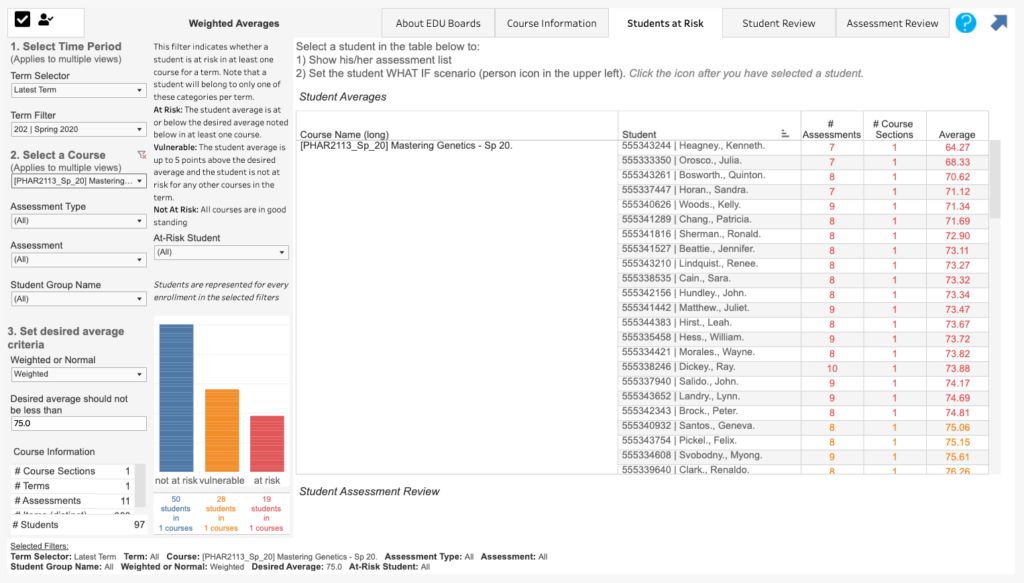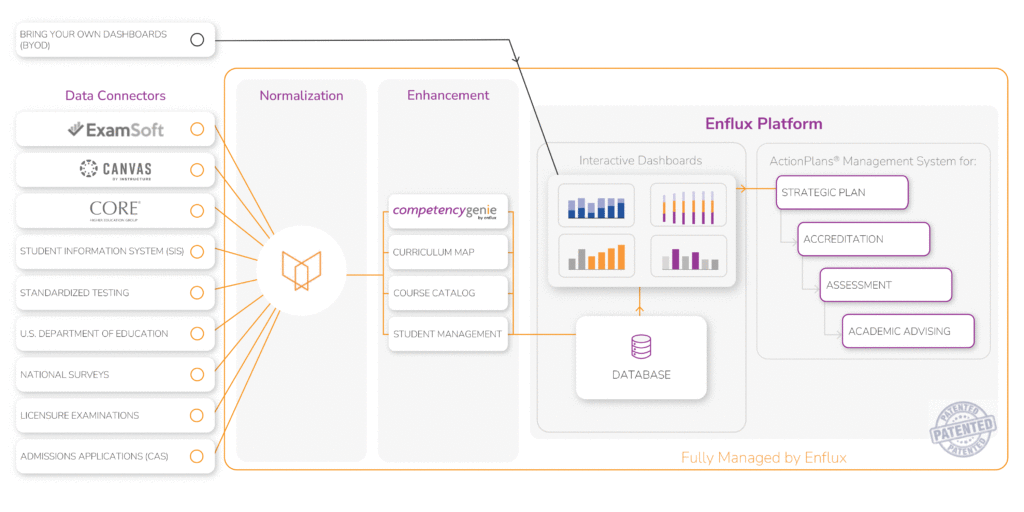
From Data to Action: Strengthening Student Success with Early Alert Systems in Higher Education
Did you know that nearly one-third of undergraduate students drop out before completing their degree? This alarming statistic highlights the urgent need for proactive intervention programs for at-risk students in higher education. Imagine a student struggling silently with financial difficulties, unnoticed until it’s too late. How can we prevent this? Poor attendance, declining grades, and personal setbacks like financial difficulties or mental health challenges often stand in the way of academic success.
Fortunately, student success analytics and early alert systems in higher education offer institutions the opportunity to shift from reactive responses to proactive, data-driven strategies—improving both student retention and long-term outcomes.
This article explores how early alert programs in higher education, particularly through the implementation of academic early alert systems, can be used to support at-risk students effectively with timely and targeted student success interventions.
The power of data-driven intervention programs for at-risk students
Today, educational data analytics empowers faculty and administrators to evaluate academic programs while understanding each student’s unique challenges. Attendance, engagement, and academic performance offer a wealth of indicators. By analyzing this data, educators can make informed decisions and act before a student’s problems become crises.
For example, consider Jane Doe, a pharmacy student who begins to struggle in pharmacology despite excelling in prior coursework. Her instructors note her absences and slipping grades. By leveraging an academic early alert system, they uncover a foundational gap in the earlier curriculum. The institution responds with personalized tutoring and targeted learning modules, helping Jane recover and adapt the curriculum for future students.
This proactive approach is the cornerstone of effective student success interventions—offering timely, targeted support that benefits both individuals and institutions.
Early alert programs in Higher Education. A comprehensive approach
Early alert programs in higher education are more than just software tools—they are institution-wide strategies designed to identify and help at-risk students early. These programs integrate departments such as academic advising, counseling, and student services, creating a holistic framework to address academic, personal, and behavioral challenges.
What’s the difference between an early alert program and an early alert system?
Although the terms are often used interchangeably, they describe distinct but complementary components:
- An early alert program encompasses the institutional strategy. It outlines protocols, communication channels, and collaboration processes across departments to support student success.
- An early alert system refers to the technology platform that enables this strategy. It aggregates and analyzes data—such as attendance records, LMS usage, grades, and behavioral patterns—to identify at-risk students in real time.
In short, the academic early alert system provides the data infrastructure, while the early alert program orchestrates human responses—ensuring that interventions are timely, personalized, and effective.
Together, they form a dynamic mechanism to implement impactful intervention programs for at-risk students.
Key functions and features of early alert systems in Higher Education
Effective early alert systems in higher education offer a range of capabilities that empower educators to detect academic risk before it’s too late:
- Comprehensive data collection. Pulls performance data from various platforms—exams, assignments, attendance systems, and LMS activity.
- Automated risk flagging. Identifies students based on customized criteria (e.g., multiple absences, low test scores, disengagement).
- Continuous monitoring. Tracks the progress of flagged students to assess whether student success interventions are having the desired effect.

Overview of students at risk within student performance and course metrics dashboard by Enflux
By synthesizing diverse data points, these systems help ensure that no student’s struggles go unnoticed. The result is a more responsive, inclusive academic environment that supports long-term success.
Case Study: Student success interventions at Palm Beach Atlantic University
At the Lloyd L. Gregory School of Pharmacy, the PASS (Proactive Academic Student Success) program is a prime example of how structured intervention programs for at-risk students, empowered by educational data analytics, can drive meaningful academic outcomes. This initiative demonstrates how early alert systems in higher education can be leveraged not merely as monitoring tools, but as integral components of institutional strategies for improving student retention and academic performance.
Overcoming data fragmentation with academic early alert systems
Before adopting Enflux, the school faced a familiar challenge: critical student performance data was fragmented across multiple platforms—including LMS, in-class assessments, and external testing tools. This siloed environment made it difficult for faculty to act quickly on signs of academic risk.
Dr. Yolanda M. Hardy, Associate Dean of Academic Affairs, led efforts to manually extract and merge performance data via Excel spreadsheets—a time-consuming process that delayed student success interventions and hampered consistent follow-up. Without a unified system, tracking intervention outcomes was inconsistent, limiting the program’s effectiveness.
By integrating Enflux’s EDU Suite, Canvas Suite, and ACPE Monitoring Suite, the school transitioned to a centralized analytics platform, enabling real-time, scalable academic early alert systems. The shift brought greater efficiency and visibility into student progress across the curriculum.
How the PASS program works
- Weekly data review. Faculty conduct regular reviews of student performance using Enflux’s educational data analytics platform to monitor academic progress.
- Early identification: Students who score below predefined thresholds on assessments are flagged early, allowing for immediate and targeted intervention.
- Personalized advising. One-on-one meetings are held to develop individualized academic success plans that may include tutoring, additional resources, or time management coaching.
- Holistic support. The program addresses both academic and personal challenges that can affect student performance—such as stress, study habits, or life circumstances.
- Continuous monitoring. Regular follow-ups help evaluate the effectiveness of support plans and adjust them as needed to keep students on track.
Results:
- Provide targeted materials. Distribute those AI-generated remedial self-paced modules and practice assessments.
- Encourage self-assessment. Instruct students to evaluate their own progress and reflect on which areas need further practice.
- Periodic follow-up. Regularly review your Action Plans, add notes on student progress, continue necessary communication, and assign additional remedial modules as needed.
This transformation significantly enhanced the speed and precision of student success interventions, while improving operational efficiency and collaboration among faculty.
Want to explore the full impact?
Read the complete case study to see how Enflux supports institutions in modernizing their early alert systems in higher education and achieving measurable outcomes.
Implementing a robust early alert program in higher education enables institutions to adopt a proactive approach to student support. These systems not only streamline the identification and intervention process but also empower educators to focus on strategic priorities like continuous quality improvement (CQI), program evaluation, self-assessment, and accreditation readiness.
Implementing effective intervention programs for at-risk students
A strategic, repeatable framework is critical to the success of any early alert program in higher education. Here’s a step-by-step guide:
- Identify key risk indicators: Attendance, GPA changes, behavioral shifts, and LMS inactivity.
- Aggregate and analyze data: Use robust predictive analytics and early alert systems in higher education to collect and interpret performance signals.
- Flag students proactively: Set specific thresholds and alerts for common risk markers.
- Deploy tailored interventions: Connect struggling students with the right advisors, mental health professionals, and academic resources.
- Evaluate outcomes: Use feedback loops and real-time dashboards to continuously refine support strategies.
Institutions that apply these steps consistently can dramatically increase retention, improve academic performance, and strengthen their student support infrastructure.
The role of standardization and collaboration
To strengthen the effectiveness of intervention programs for at-risk students, institutions need more than just data—they need coordination. Standardizing processes and fostering collaboration across departments are key. With tools like Enflux’s ActionPlan® Management System, faculty and staff gain a centralized workspace to manage tasks, share insights, and ensure timely follow-up.
Clearly defined roles and transparent data access empower teams to act quickly and cohesively. When academic advisors, faculty, and student support services work in sync, student success interventions become more personalized, consistent, and impactful.
This kind of cross-functional collaboration is essential to fully realize the promise of educational data analytics—not just identifying at-risk students, but also addressing the deeper challenges they face.
Proactive, data-informed student support
As digital tools continue to evolve, so does the potential of early alert systems in higher education. These platforms now do more than flag academic issues—they provide the foundation for long-term planning, curriculum development, and continuous improvement.
By embedding early alert programs in higher education within a broader strategy of proactive support, institutions can build more resilient and inclusive academic environments. When educators are equipped with real-time insights and streamlined processes, they can deliver the kind of support that truly makes a difference, guiding students not just toward retention, but toward long-term success.

Struggling to identify at-risk students early enough?
Book a free 15-minute assessment call with Enflux to discover how our early alert systems and learning analytics can help you proactively support student success.


